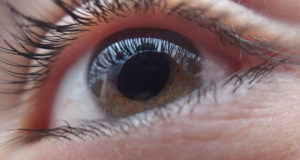Laser-assisted in situ keratomileusis” (LASIK) is a routine surgery to correct near- and farsightedness as well as astigmatism. It’s a preferred treatment (in fact, it’s one of the most common laser eye surgeries) for a reason: it’s virtually pain-free and takes minutes. Moreover, improved results can be literally seen within a day. Pronouncing its unabbreviated name, however, isn’t LASIK’s greatest challenge. This procedure isn’t for everyone. Unfortunately, there are limitations as to who will qualify as a good candidate.
How Does LASIK Work?
First, you should know what you’re signing up for. After passing a preliminary assessment, a patient is instructed to stop wearing contacts for a few days before the operation – an optometrist determines the precise amount of time. The actual LASIK procedure uses lasers to reshape the cornea so light is properly focused, resulting in clearer vision and correcting the problems mentioned above. Correcting the cornea may include smoothing it into a normal shape. In addition to LASIK, other elective treatment options are available:
- Photorefractive keratectomy (PRK)
- LASEK (A variation of PRK)
- Phakic IOLs (implantable lenses)
Topical anesthetic drops are the only analgesic used in the operation. However, no surgery is risk-free. Consult with your eye doctor for more information; he or she can determine if you’re qualified based on your age, health, and other factors.
Am I a Good Candidate for LASIK?
A LASIK assessment starts with an eye exam. This will help your doctor determine if you’re a good candidate. Your eyes need to be healthy enough for the procedure, and the shape and thickness of the corneas, pupil size, and other conditions will be assessed. The moistness of your eyes is also important, as developing dry eyes after LASIK is possible. You’ll also be questioned about your overall health and any medications you’re taking.
In addition to this evaluation, these factors may exclude you from the surgery:
- Age. You must be at least 18 years old.
- Health. Your current prescription should be stable, so the doctor will look for any changes within a one-year period. Diabetes and autoimmune issues (which includes any medication that inhibits your immune system) may also disqualify you from this procedure.
- Eye strength. Your eyes must be free of diseases, such as cataracts and glaucoma. You’re also ineligible if you have any eye infections or injuries.
- Other factors. LASIK can’t be performed on expecting mothers due to the hormone changes that accompany pregnancy. You must also have a minimum corneal thickness of 0.5 mm.
In addition to these medical limitations, other factors may be prohibitive due to personal constraints or concerns.
- Risk. Some patients experience discomfort following surgery, so go over any concerns with your doctor. Corneal changes cannot be reversed, and though it can be completed in an hour, this is a complex procedure that permanently changes your vision. You may also experience side effects like difficulty driving at night or dry eyes.
- Cost. Expect to pay over $2,000 per eye.
If you’re eligible for LASIK and want to proceed with the surgery, your eye care doctor will prepare you for the appointment. You should have someone drive you home afterwards, and you may need to avoid intense exercise for approximately one week.




